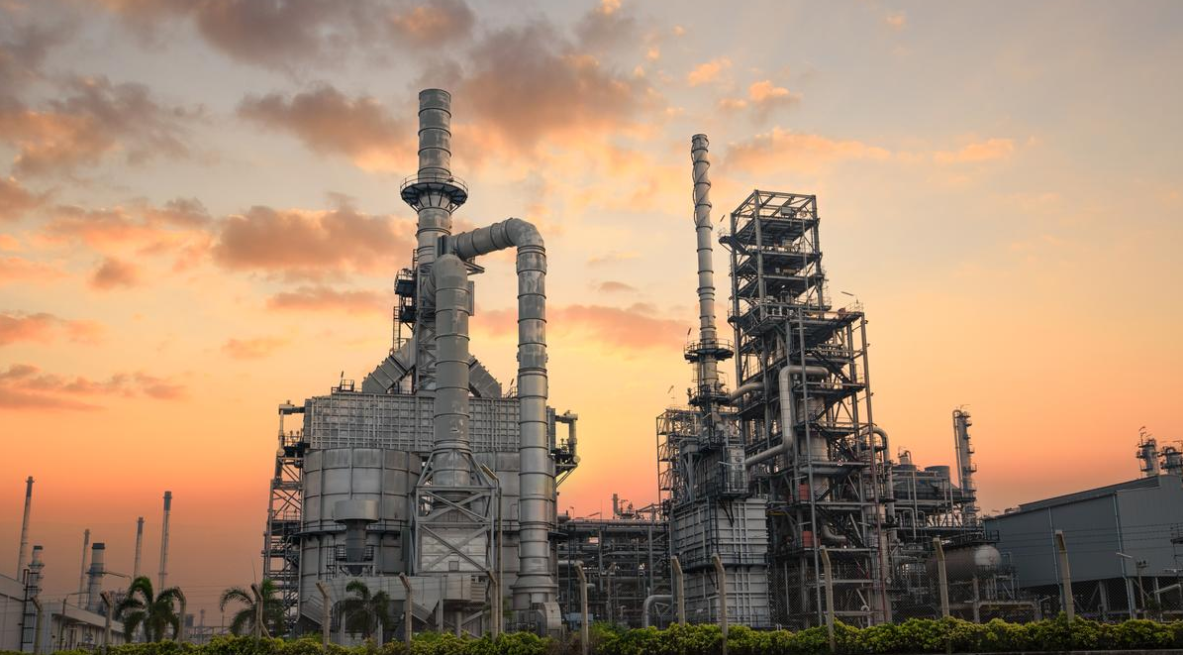Copyright infringement not intended
Picture Courtesy: The Hindu
Context:
According to official data from the Ministry of Commerce and Industry, growth in the country’s eight core sectors slowed to 3% in September 2025, marking the slowest pace in three months. This slowdown was mainly due to declines in four fuel-related sectors: coal, crude oil, natural gas, and refinery products, along with a notable slowdown in the fertilisers sector.
Current Status:
Key Sector Performances:
- Steel: Recorded a significant increase of 14.1%, driven by robust demand from infrastructure projects.
- Cement: Grew by 5.3%, reflecting sustained demand in construction activities.
- Electricity: Experienced a 2.1% rise, indicating steady energy consumption.
- Fertilizers: Saw a modest growth of 1.6%, supporting agricultural activities.
Declining Sectors:
- Coal: Output decreased by 1.2%, contrasting with a 11.4% growth in August.
- Crude Oil: Production fell by 1.3%, reversing the 2.4% growth observed in August.
- Natural Gas: Experienced a 3.8% decline, marking a continued downward trend.
- Refinery Products: Output dropped by 3.7%, following a 5.8% growth in September 2024.
What are core sectors?
The core sectors refer to eight key industries that are considered critical to the overall industrial health and economic performance of a country. In India, these sectors collectively contribute significantly to industrial output and influence GDP growth.
The Eight Core Sectors are:
- Coal
- Crude Oil
- Natural Gas
- Refinery Products (like petrol, diesel, and other petroleum products)
- Fertilizers
- Steel
- Cement
- Electricity
Evolution of Core Sector:
|
Period
|
Key Developments in Core Sectors
|
Focus Areas
|
Challenges
|
|
1950s – 1980s
|
- Emphasis on self-reliance with public sector dominance- Expansion of steel, coal, electricity, cement, and fertilizers
|
Heavy industrialization Infrastructure build
|
Limited technology Low efficiency
|
|
1991 – Early 2000s
|
- Economic liberalization- Increased private and foreign investment- Modernization of refineries and natural gas sectors
|
Market reforms Global integration
|
Regulatory hurdles Infrastructure gaps
|
|
2000s – Present
|
- Focus on sustainable energy- Infrastructure boost from urbanization and government projects- Growth in steel & cement
|
Clean energy initiatives Infrastructure growth
|
Environmental concerns Resource volatility
|
|
Current Scenario (2025)
|
- Mixed performance: slowdown in coal, oil, gas sectors- Growth in steel, cement, electricity- Policy reforms ongoing
|
Industrial health indicator Policy focus on sustainability and modernization
|
Price fluctuations Environmental regulations
|
Challenges:
- The coal sector is facing significant hurdles due to stricter environmental regulations aimed at reducing pollution. Additionally, domestic production has been declining, and mining safety concerns persist. These factors contributed to a 1.2% contraction in coal output in September 2025. (Source: Ministry of Commerce & Industry)
- The crude oil industry struggles with a high dependence on imports, making it vulnerable to fluctuations in global oil prices. Production and exploration challenges further impacted the sector, leading to a 1.3% decline in output during the same period. (Source: Ministry of Petroleum)
- Natural gas faces infrastructure bottlenecks, especially in pipeline networks. Combined with decreased domestic production and growing competition from renewable energy sources, the sector has seen a continuous contraction for 15 months, with a 3.8% drop reported in September 2025. (Source: Ministry of Petroleum)
- The refinery sector is affected by global crude price volatility and tighter environmental norms. Capacity utilization issues have also weighed on output, resulting in a 3.7% decline in refinery products production. (Source: Ministry of Commerce & Industry)
- The fertilizer industry contends with a heavy subsidy burden, disruptions in the supply chain, and reliance on imported raw materials. Growth slowed to 1.6% in September 2025, reflecting these ongoing difficulties. . (Source: Department of Fertilizers)
- Steel production showed a strong 14.1% growth in September 2025, driven by robust infrastructure demand. However, it faces challenges including raw material price fluctuations, global demand uncertainty, and rising environmental compliance costs. (Source: Ministry of Steel)
- The cement industry’s growth slowed to 5.3% due to rising input costs like fuel and power, along with intense market competition and saturation in some regions. (Source: Ministry of Commerce & Industry)
- The electricity sector is undergoing a transition toward renewable energy, which presents challenges in terms of transmission and distribution losses. Additionally, financial stress among distribution companies (DISCOMs) has slowed sector growth to 2.1% in September 2025. (Source: Ministry of Power).
Government Measures:
Coal
Government Measures:
- Commercial mining reforms to allow private participation and reduce coal imports
- Auction of coal blocks through transparent bidding
- Investment in coal gasification and cleaner coal technologies
- Incentives under the Atma nirbhar Bharat initiative for self-reliance in coal production
Relevant Policy Initiatives:
- Mines and Minerals (Development and Regulation) Amendment
- Technology Upgradation Schemes in Coal PSUs (CIL)
Crude Oil
Government Measures:
- Open Acreage Licensing Policy (OALP) for upstream exploration
- Disinvestment in public oil companies to attract private investment
- Strategic Petroleum Reserve (SPR) expansion to ensure energy security
- Emphasis on blending of ethanol and promotion of biofuels
Relevant Policy Initiatives:
- Hydrocarbon Exploration and Licensing Policy (HELP)
- National Bio-Energy Programme
Natural Gas
Government Measures:
- Expansion of the gas pipeline network under the One Nation One Gas Grid
- Increased use of Compressed Natural Gas (CNG) and PNG in urban areas
- 100% FDI permitted under automatic route in gas infrastructure
- Plans to make natural gas 15% of India’s energy mix (currently around 6.5%)
Relevant Policy Initiatives:
- City Gas Distribution (CGD) projects under PNGRB
- National Gas Grid – GAIL, Indian Oil expansion
Refinery Products
Government Measures:
- Modernization and capacity expansion of refineries
- Promotion of green hydrogen and clean fuel blending
- Implementation of Bharat Stage VI fuel standards
- Incentives for private sector investment in refining
Relevant Policy Initiatives:
- National Green Hydrogen Mission
- Petroleum and Explosives Safety Organization (PESO) reforms
Fertilisers
Government Measures:
- Direct Benefit Transfer (DBT) for fertiliser subsidies to improve efficiency
- Revamping of urea policy to promote balanced fertiliser use
- Revival of closed fertiliser plants under Urea Policy 2015
- Promotion of nano-fertilisers and organic alternatives
Relevant Policy Initiatives:
- New Nutrient Based Subsidy (NBS) scheme
- Make in India for fertilisers
Steel
Government Measures:
- Production-Linked Incentive (PLI) Scheme for specialty steel
- National Steel Policy 2017 to boost domestic production and reduce imports
- Support for R&D in low-carbon steel technologies
- Infrastructure-led demand through GatiShakti, PM Awas Yojana, and highways
Relevant Policy Initiatives:
- National Steel Policy 2017
- PLI Scheme for Specialty Steel (Rs. 6,322 crore budgeted)
Cement
Government Measures:
- Boost through infrastructure development projects (roads, housing, metro)
- Encouragement for energy-efficient and eco-friendly cement production
- Reduced GST rates and ease in raw material transport via multimodal logistics
- Support under PM GatiShakti to improve supply chain efficiency
Relevant Policy Initiatives:
- Infrastructure Pipeline Projects (NIP)
- Energy Conservation Building Code (ECBC)
Electricity
Government Measures:
- Expansion of renewable energy (solar, wind, hydro) under multiple missions
- Smart metering and digital grid initiatives
- Revamped Distribution Sector Scheme (RDSS) to improve DISCOMs’ performance
- Promotion of battery storage and grid modernization
Relevant Policy Initiatives:
- Ujwal DISCOM Assurance Yojana (UDAY)
- Revamped Distribution Sector Scheme (RDSS)
- National Solar Mission
- Green Energy Corridors
Way Forward:
Strengthen the Investment Climate
- Given rising inflows, sustaining momentum requires continuing improvements in ease of doing business and regulatory clarity.
- Evidence: The surge in FDI is linked in part to liberalisation of norms and greater openness. (Source: India Brand Equity Foundation)
- Action: Simplify approval processes, maintain transparent rules, and reduce sector and ownership restrictions.
Diversify Sector and Source Country Mix
- Although services and software sectors dominate (19 % and 16 % respectively), other sectors like manufacturing are growing but still under‑penetrated. (Source: Business Today)
- Action: Offer targeted incentives for sectors with high value‐addition (manufacturing, green energy, R&D), and attract investment from newer geographies beyond the current major sources (e.g., Singapore 30 %). (Source: Fortune India)
Focus on Deepening Investment Quality
- Growth in gross numbers is good, but focus should shift to investments that bring technology, export capacity, linkages with domestic firms, and long‑term commitment.
- Action: Develop performance‐linked incentives (jobs, exports, skills transfer); encourage FDI in high‐tech, clean‑energy, and knowledge sectors.
Enhance Regional Spread and Infrastructure Support
- Data shows states like Maharashtra (39 %), Karnataka (13 %), and Delhi (12 %) dominate inflows. (Source: India Brand Equity Foundation)
- Action: Improve industrial infrastructure in other states/regions; develop qualified investment zones and corridors; promote cluster development to attract FDI beyond traditional hubs.
Leverage India’s Position in Global Value Chains (GVCs)
- The cumulative US$ 1 trillion FDI figure shows the scale of entry, and there’s scope to make India a deeper part of global manufacturing and services networks. (Source: India Brand Equity Foundation)
- Action: Position India as a reliable destination for global supply chains: emphasise competitive advantages – large domestic market, skilled workforce, connectivity; negotiate trade/investment agreements; accelerate logistics/port/rail connectivity.
Promote Sustainability and Emerging Sectors
- Global investment trends favour ESG‐compliant, clean‑energy, tech‐oriented projects.
- Action: Offer incentives for greenfield FDI in renewables, battery storage, electric mobility, plus digital services; set up dedicated policy packages for emerging sectors like semiconductor manufacture, green hydrogen.
Improve Aftercare & Expansion of Existing Investments
- Retaining and expanding existing foreign investors is as important as attracting new ones.
- Action: Set up robust aftercare services (single‐window, grievance redress, expansion facilitation); track reinvestment rates; encourage reinvestment from existing FDI participants.
Source: The Hindu
|
Practice Question
Q. “Foreign Direct Investment (FDI) plays a crucial role in the growth of India’s core sectors, but sectoral and regional imbalances persist.” Discuss the recent trends in FDI inflows into India and suggest measures to make it more inclusive and growth-oriented.
|
Frequently Asked Questions (FAQs)
India’s eight core sectors are:
Coal, Crude Oil, Natural Gas, Refinery Products, Fertilizers, Steel, Cement, and Electricity.
These sectors account for over 40% of the Index of Industrial Production (IIP) and are critical to the overall health of the economy.
- Regulatory hurdles
- Infrastructure bottlenecks
- Land and labour issues
- Environmental clearances
- High compliance burden in some sectors
- Improve logistics and infrastructure
- Offer sector-specific incentives
- Encourage regional diversification
- Simplify regulations and compliance
- Promote green and sustainable investments












